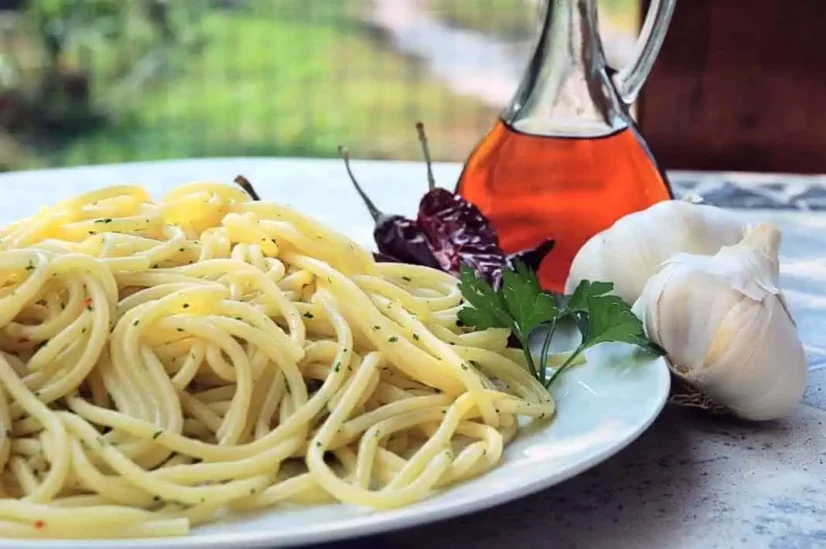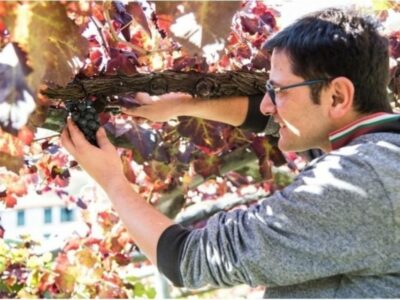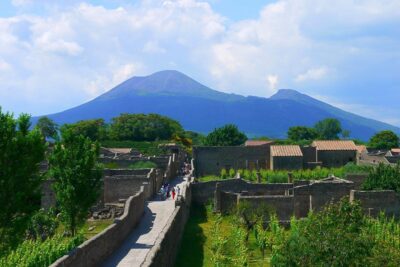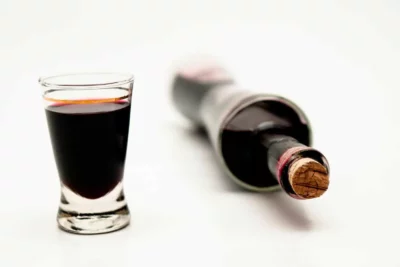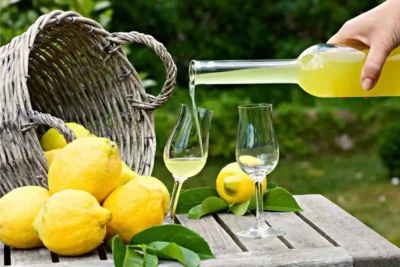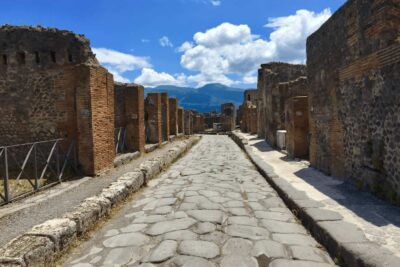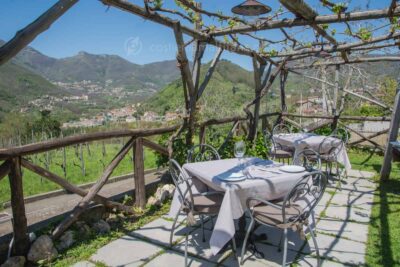Colatura di alici, or anchovy sauce, is a distinctive product hailing from the town of Cetara, a charming seaside village. This liquid amber sauce is derived from the maturation of salted anchovies, traditionally fished using a technique passed down through generations, preferably from late March to early July.
The colatura di alici di Cetara is ready at the beginning of December, and families in Vettari prominently use it to dress spaghetti or linguine, becoming the undisputed stars of their dining tables. In the first half of December, the Anchovy Drippings Festival takes place, showcasing new recipes and hosting study conferences on the product. This precious liquid is one of the Slow Food presidia.
Table of Contents
A Long History of a tasty ingredient
The origins of colatura di alici di Cetara date back to ancient times, likely of Oriental origin, bearing some similarities to the sauce that ancient Greeks called “Garon,” obtained from the fish “Garos” (anchovies).
The Romans gave a new name to this flavorful liquid, namely “Garum.” Garum was a staple on the tables laden with various delicacies, used to season succulent dishes of meat, chicken, lamb, and even vegetables.
The production of Garum primarily occurred in Numidia, an area corresponding to present-day Algeria.
While Garum was introduced in ancient Rome in the 2nd century B.C., records of the use of colatura di alici from Cetara date back to the mid-13th century.
Monks preaching at the canonical San Pietro a Tuczolo, a hill near Amalfi, began working on colatura di alici from Cetara. Among their activities was the bluefish harvest, which took place in the summer months aboard a modest fleet that transformed into a means of transporting wheat in winter.
After fishing, the anchovies had their heads and entrails removed and were layered with coarse salt in large wooden barrels. A heavy stone was placed on the cover, serving as a press. The excess liquid that deposited and dripped to the bottom was so aromatic that the monks decided to collect and bring it to the kitchen.
The monk responsible for meal preparation decided to season boiled vegetables, adding some spices, herbs, and oil. The success was immediate, and the monks sent a bit of the amber liquid as a gift to the inhabitants of nearby towns and other monasteries.
Everyone started to devise ways to produce it at home until someone had the brilliant idea of using the same cap used to separate wine from must to filter the sauce and make it clearer. And thus, the prized colatura di alici di Cetara was born.

How colatura di alici di Cetara is made
The process for preparing colatura di alici is quite lengthy and laborious. As mentioned, the anchovy fishing period ranges from late March to early July, with May being the best month. After fishing, the anchovies are cleaned and meticulously head-removed by hand.
For about 12 hours, these anchovies rest in a container with a mixture of water and salt, called “increscatura.” This is just the first part of the process. Subsequently, they are layered with coarse salt in oak barrels called “terzigni,” one-third the size of the classic barrels.
The barrels are sealed with a wooden lid, on which large marine stones are placed. During the first 48 hours, greater pressure must be applied, then the weight can be lightened. The liquid that surfaces during pressing is the base for preparation.
By the end of October, colatura di alici is almost ready for the last phase. The collected liquid is poured into the terzigno where the anchovies have been macerating. As it passes through the layers, it collects all the nutrients. Through the “vriale,” a hole drilled in the terzigno, it is recovered and then transferred to a tank.
The final step involves filtering the liquid with linen cloths and letting the colatura di alici rest on the windowsill in special glass bottles. Before sealing with a cork stopper, a bouquet of oregano is placed to flavor the sauce.
Recipes with Colatura di Alici
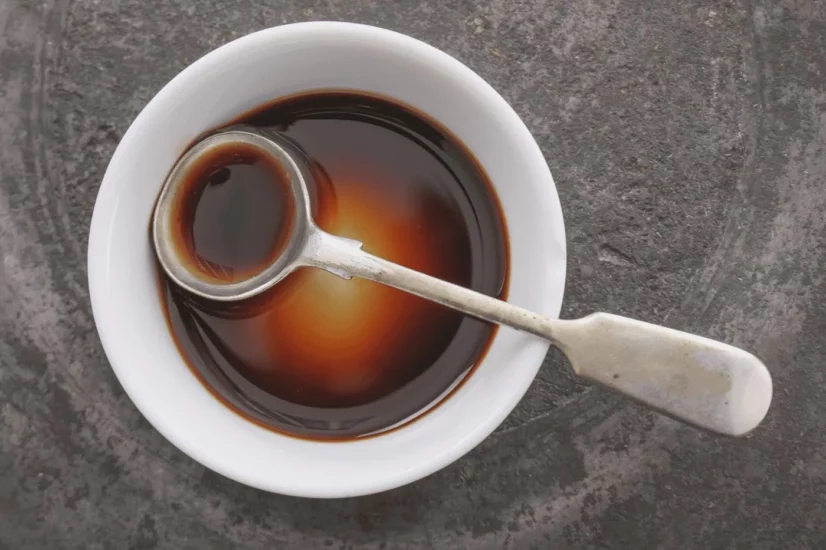
The product has a strong and distinctive flavor, ideal for simple dishes.
The globally known traditional recipe is for spaghetti with colatura di alici di Cetara.
For approximately 4 people, you’ll need:
🔹 350 grams of spaghetti,
🔹 8 tablespoons of extra virgin olive oil,
🔹 4 tablespoons of colatura di alici from Cetara,
🔹 garlic, parsley, and chili to taste.
Boil the pasta in unsalted water, and while it cooks, prepare a blend with parsley, garlic, and chili. In a large bowl, mix the blend with olive oil and colatura di alici from Cetara. Drain the spaghetti al dente, mix in the sauce, and serve.
If desired, you can add some toasted breadcrumbs in a pan for extra crunch.
Another equally delicious recipe involves adding sun-dried tomatoes and zucchini, Mediterranean products that pair well with colatura di alici. Instead of spaghetti, you can use fusilli, rigatoni, or penne.
Zucchini and sun-dried tomatoes should be separately cooked with a drizzle of oil and a clove of garlic.
Don’t add too much salt, as colatura di alici from Cetara is savory, and remember it’s preferable to use it raw to enhance the flavor.
In challenging times, colatura di alici from Cetara was a product used by poor fishermen’s households to season spaghetti, replacing real clams. Today, it represents a small luxury and is highly sought after by Michelin-starred chefs.
How to Purchase Colatura di Alici di Cetara?
Large-scale industry can never produce colatura di alici because the ancient process does not involve the use of modern machinery.
The taste and flavor of the liquid result from manual labor and the materials that Mother Nature provides. The uniqueness of colatura di alici makes it a one-of-a-kind product, even though there are “surrogates” on the shelves of major retailers.
Until recently, colatura di alici, like Amalfi’s limoncello, could only be purchased in the Amalfi Coast or at some retailer of typical Campanian products. Finding the product outside the region was challenging unless you turned to a store specializing in regional gastronomic products.
Today, thanks to the web, it is possible to purchase authentic colatura di alici di Cetara remotely and have it conveniently delivered to your home.
If, for example, you’ve depleted the supplies purchased locally, if you want to let that couple of friends invited to dinner taste it, if you’re too curious to try it and don’t want to wait to vacation on the Amalfi Coast, we have a selection of products that will delight you and can also be useful if you need a unique and original gift idea!


